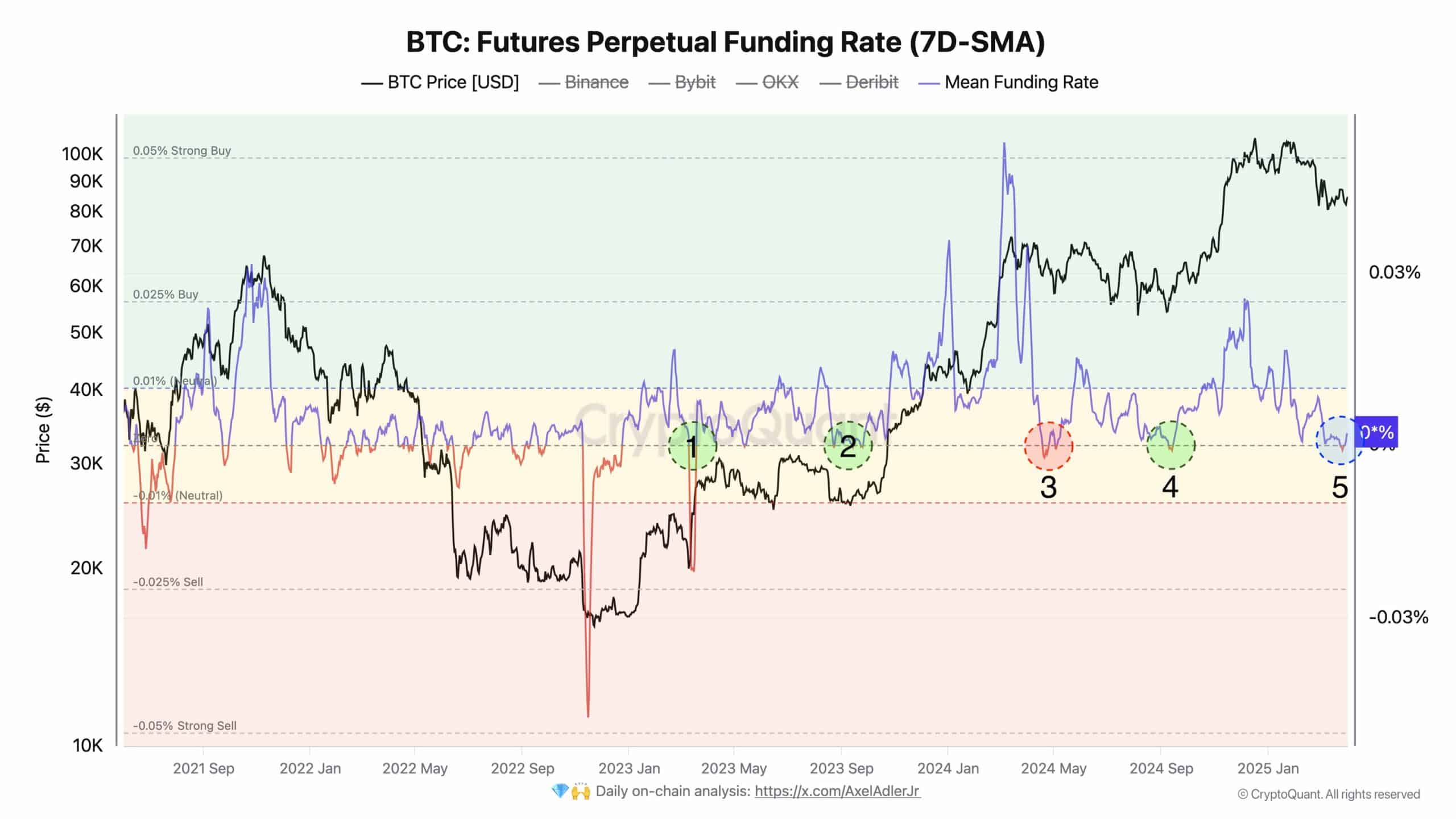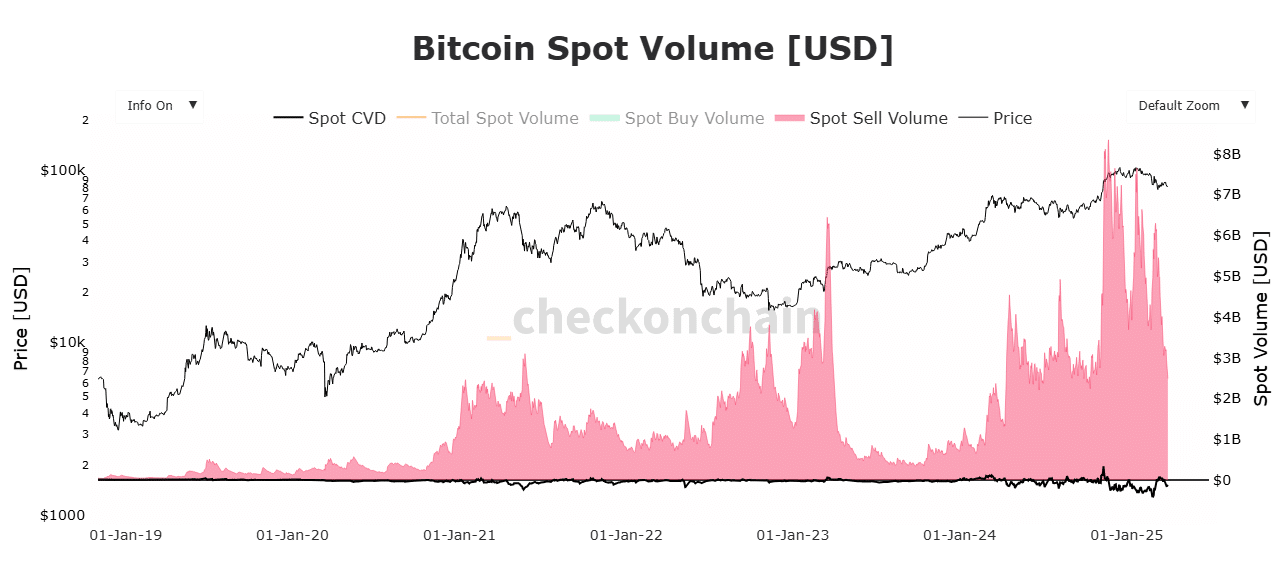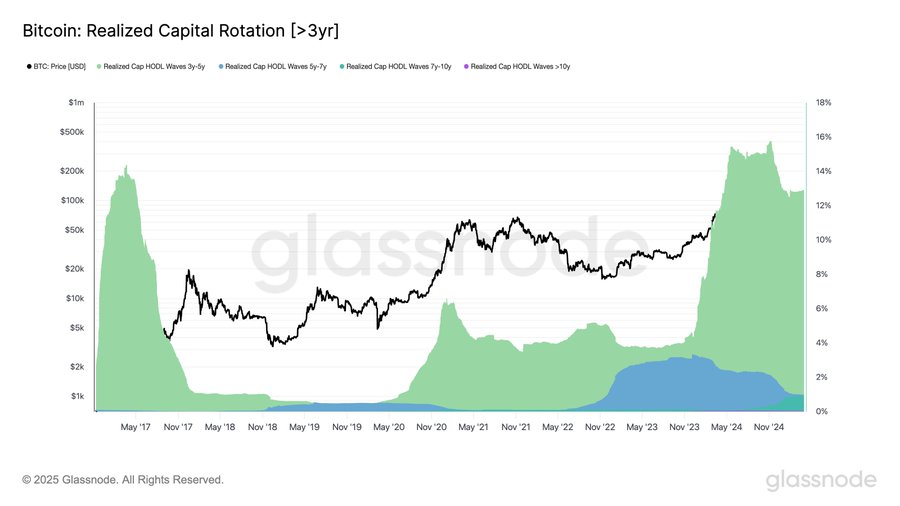- BTC investors remain optimistic despite recent market volatility.
- Bitcoin’s average Funding Rate across four major exchanges has declined into negative territory.
Over the past day, Bitcoin [BTC] has experienced extreme volatility. Through this period, the prices have fluctuated from a low of $81k to a high of $85k, then retracing to $84k at press time.
Despite the current market volatility, key stakeholders remain optimistic and anticipate market stability.
Inasmuch, CryptoQuant analyst Axel Adler has predicted an upcoming market stability, citing Bitcoin’s average Funding Rate.
Bitcoin’s Funding Rate hits negative
In his analysis, Adler observed that on the four major exchanges; Binance, Bybit, OKX, and Deribit the average Funding Rate has declined into negative territory.
During this cycle, the market has witnessed four similar instances where the average Funding Rate dropped to negative. During these instances, BTC prices rebounded, while only once that prices declined.
This suggests that a drop to negative territory is likely to result in price increase than decline.

Source: CryptoQuant
To make his case, the analyst noted that, currently, the corporate sector is actively buying Bitcoin, while the spot market selling pressure is minimal as experienced investors have stopped selling.
The reduced selling is evidenced by the declining spot sell volume which has dropped from $6.2 billion on the 5th of March to $2.4 billion as of the 1st of April.
This means selling volume has reduced by $3.8 billion in less than a month.


Source: Checkonchain
Also, whales are not selling as much. In fact, whale-to-exchange activity has seen a sharp decline.
Thus, whale-to-exchange flow has dropped from 1.76% to 0.15% suggesting that whales have reduced the amount of Bitcoin they are sending into exchanges to sell.
This market behavior suggests that although markets are seeing selling activities, it’s gradually declining.


Source: IntoTheBlock
Another aspect signaling market recovery is the fact that long-term holders have returned to the market for accumulation.
Although the share of wealth held by investors who bought $BTC 3–5 years ago has declined by 3% since its November 2024 peak, it remains at historically elevated levels.
This suggests that the majority of investors who entered the market between 2020 and 2022 are still holding.


Source: Glassnode
These three aspects indicate a normalization of market conditions after the overheating phase. However, the market is still facing one major condition that is now standing against a potential price rebound.
The only issue is poor macroeconomic indicators that are blocking BTC’s growth.
Therefore, positive signals from the Fed and the Trump Administration could renew the inflow of cash via ETFs, potentially triggering the start of a new rally.
What’s next for BTC?
As observed above, Bitcoin investors are in the belief phase and expect once macroeconomic issues stabilize, BTC prices to rebound.
As such, with retailers, whales, and long-term holders turning bullish, Bitcoin could see a strong rebound on its price charts once external factors turns favorable.
Therefore, if history repeats itself accompanied by bullish sentiments currently observed in the market, BTC prices will increase.
An upside move from current rate will see BTC reclaim $86701 resistance which will set the crypto for a breakout above $87k.
Conversely, if the anomaly of one instance observed during this cycle reoccurs, a retrace will see a drop to $81155.

